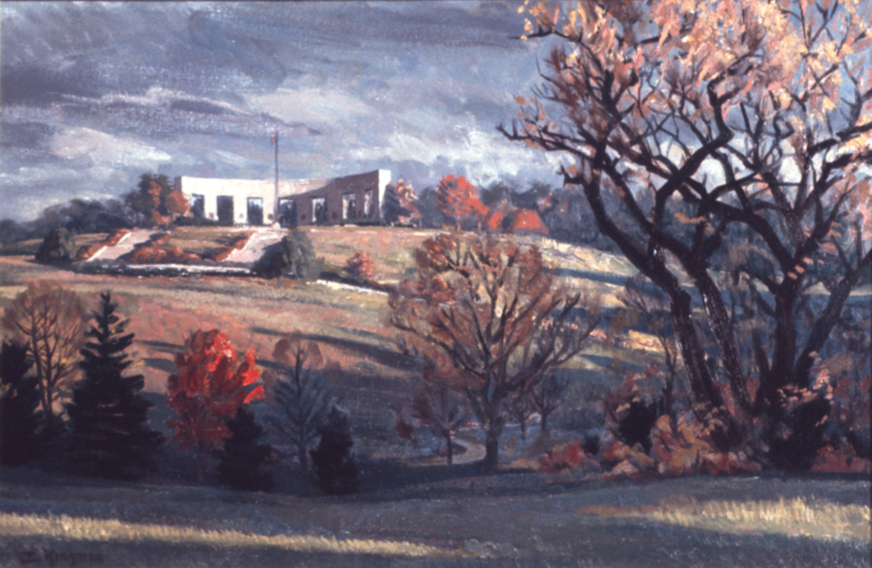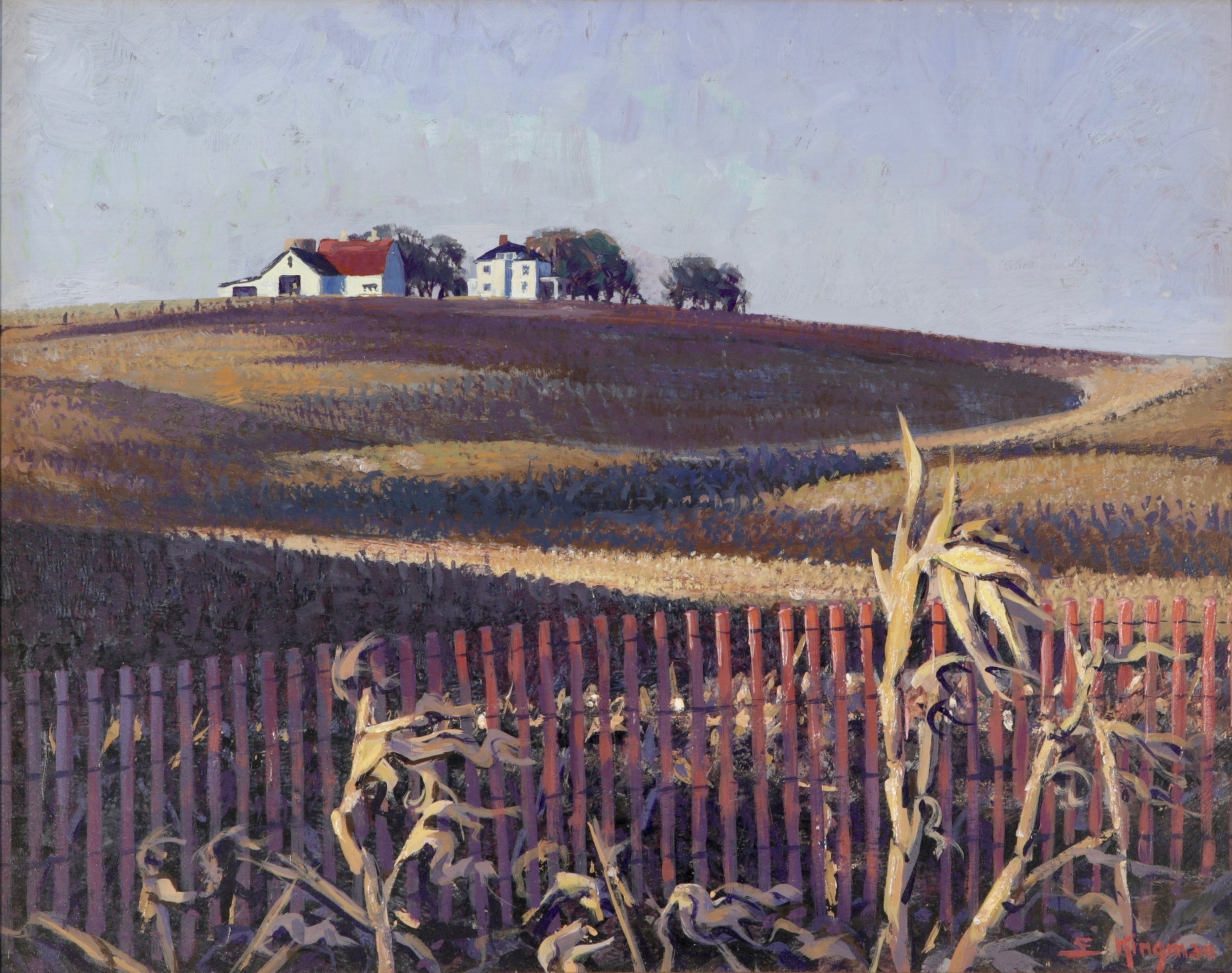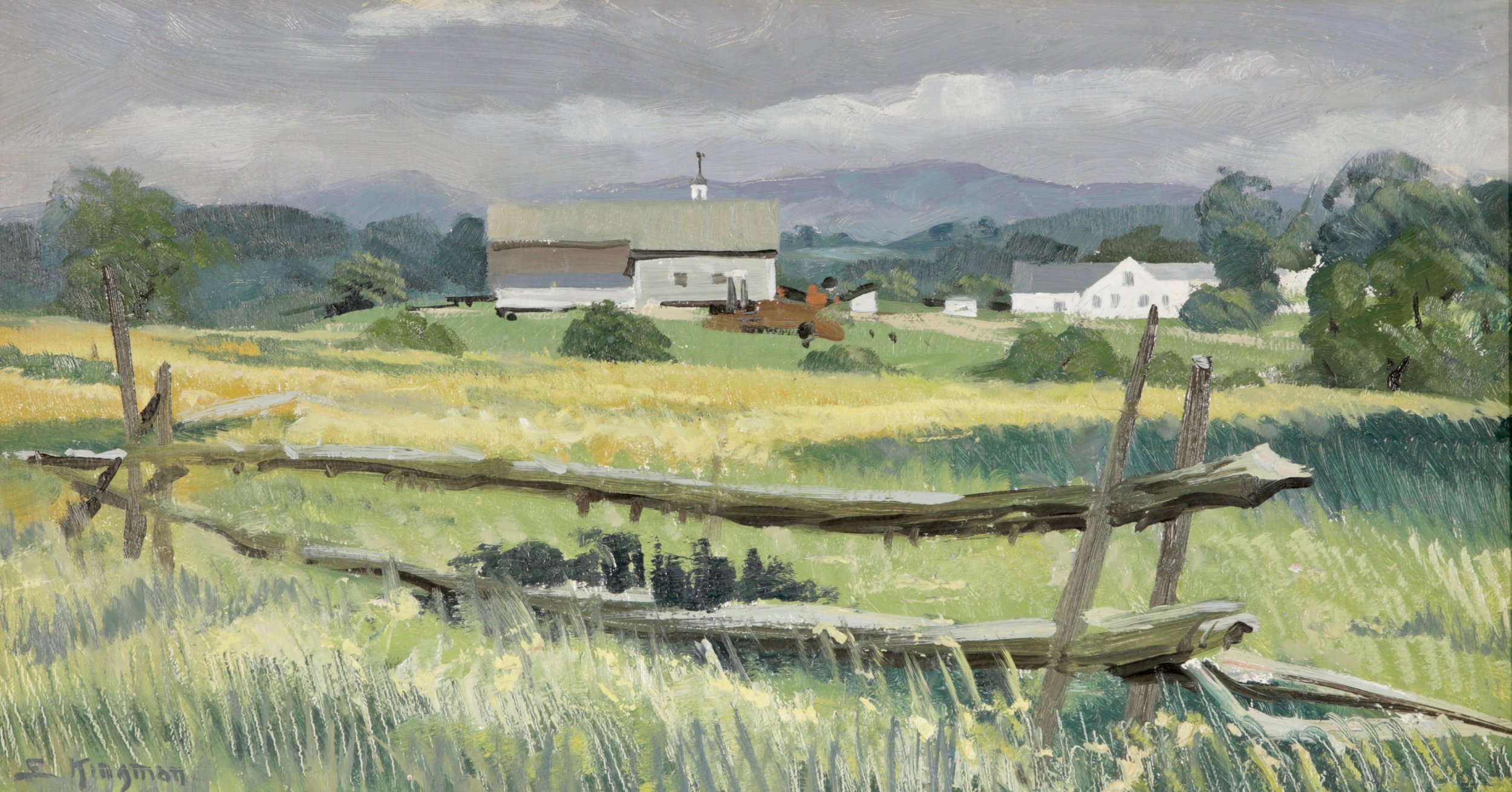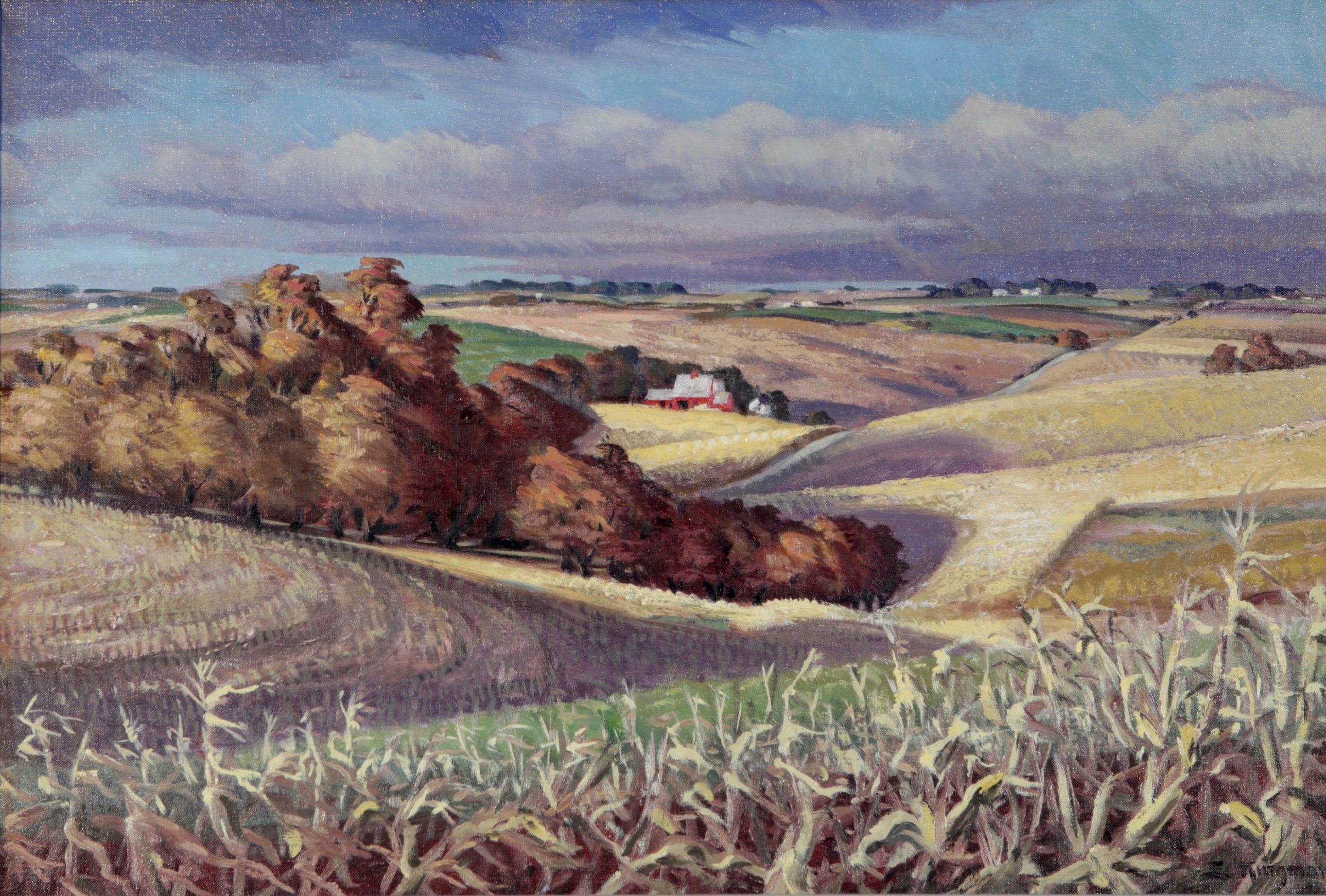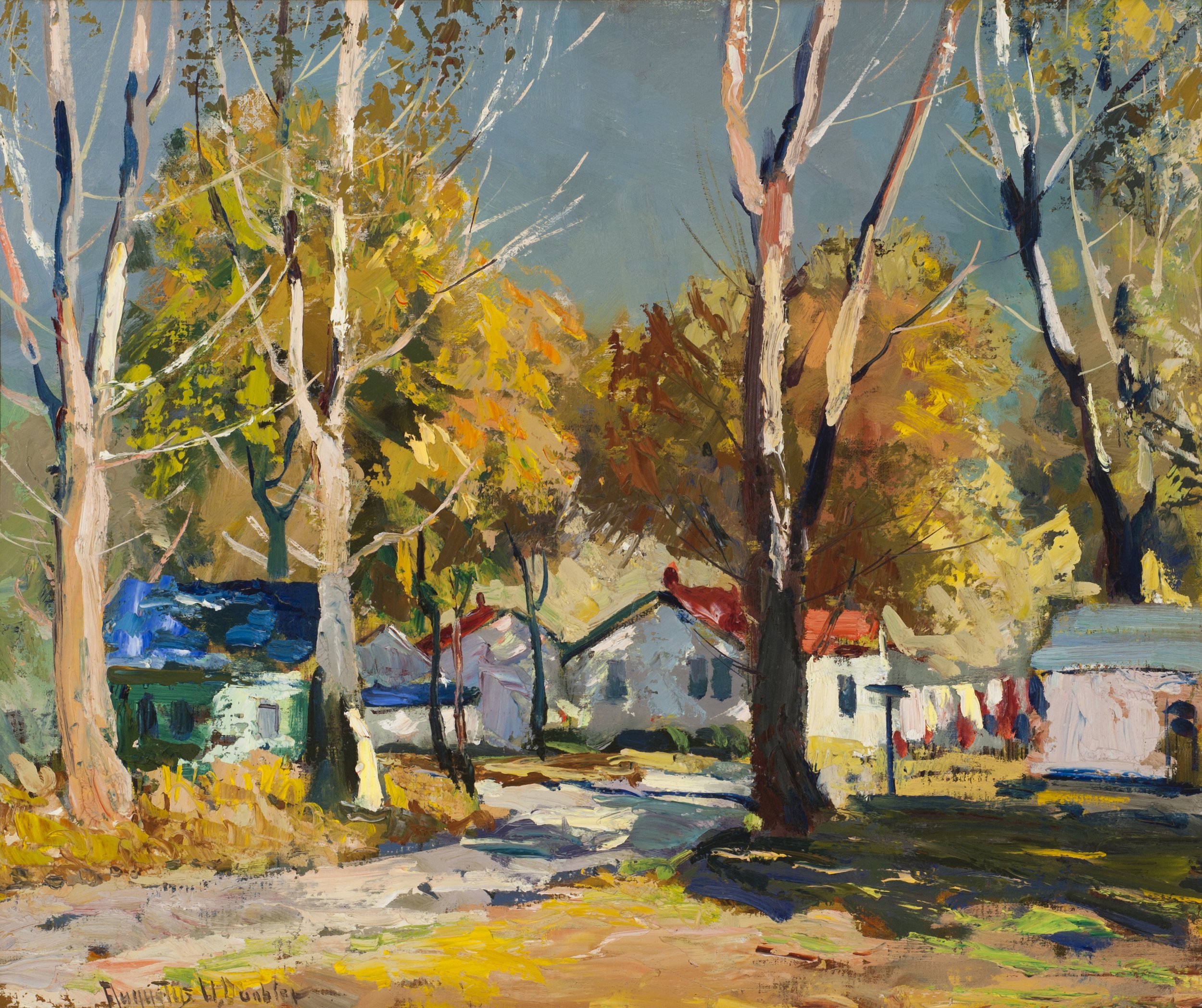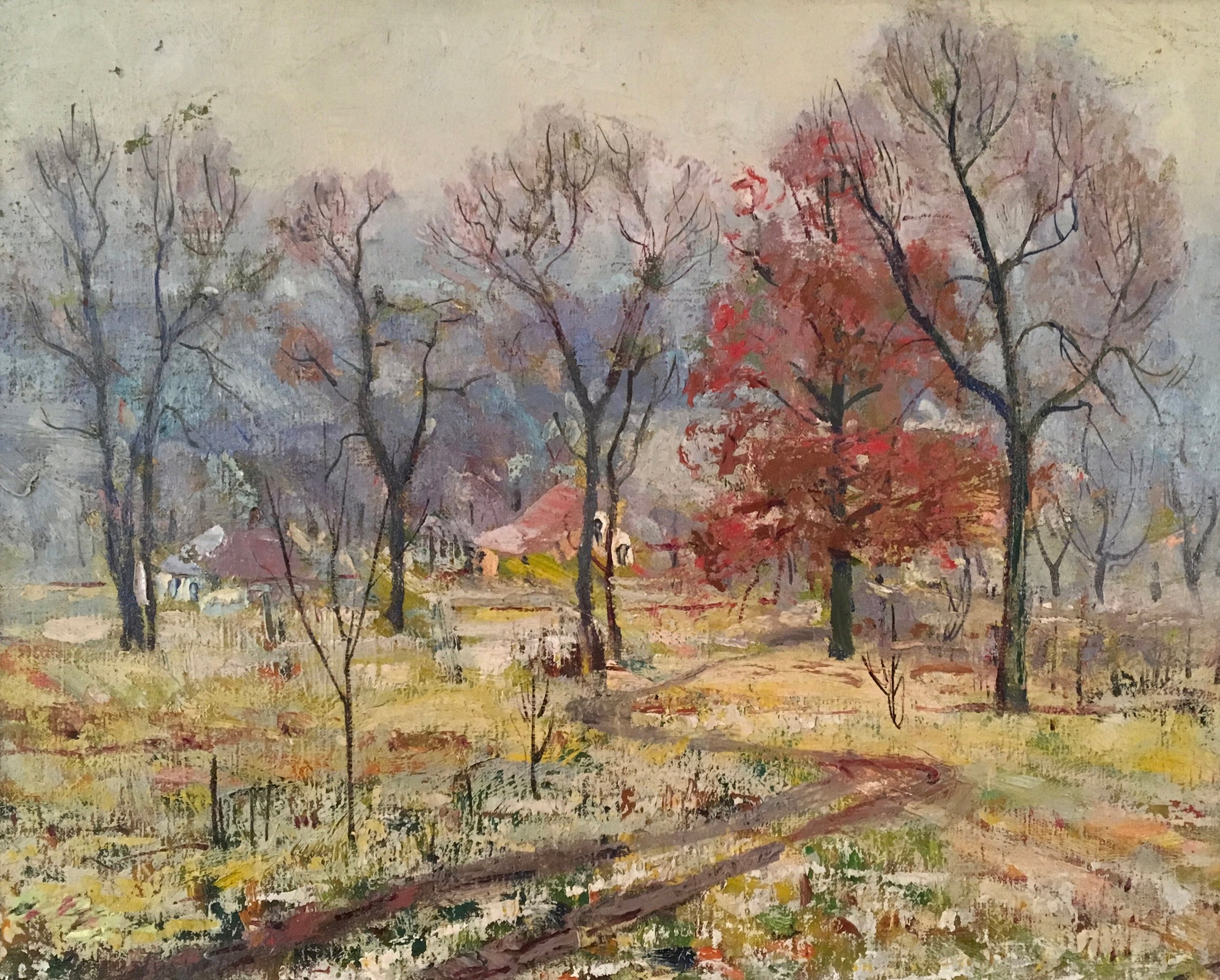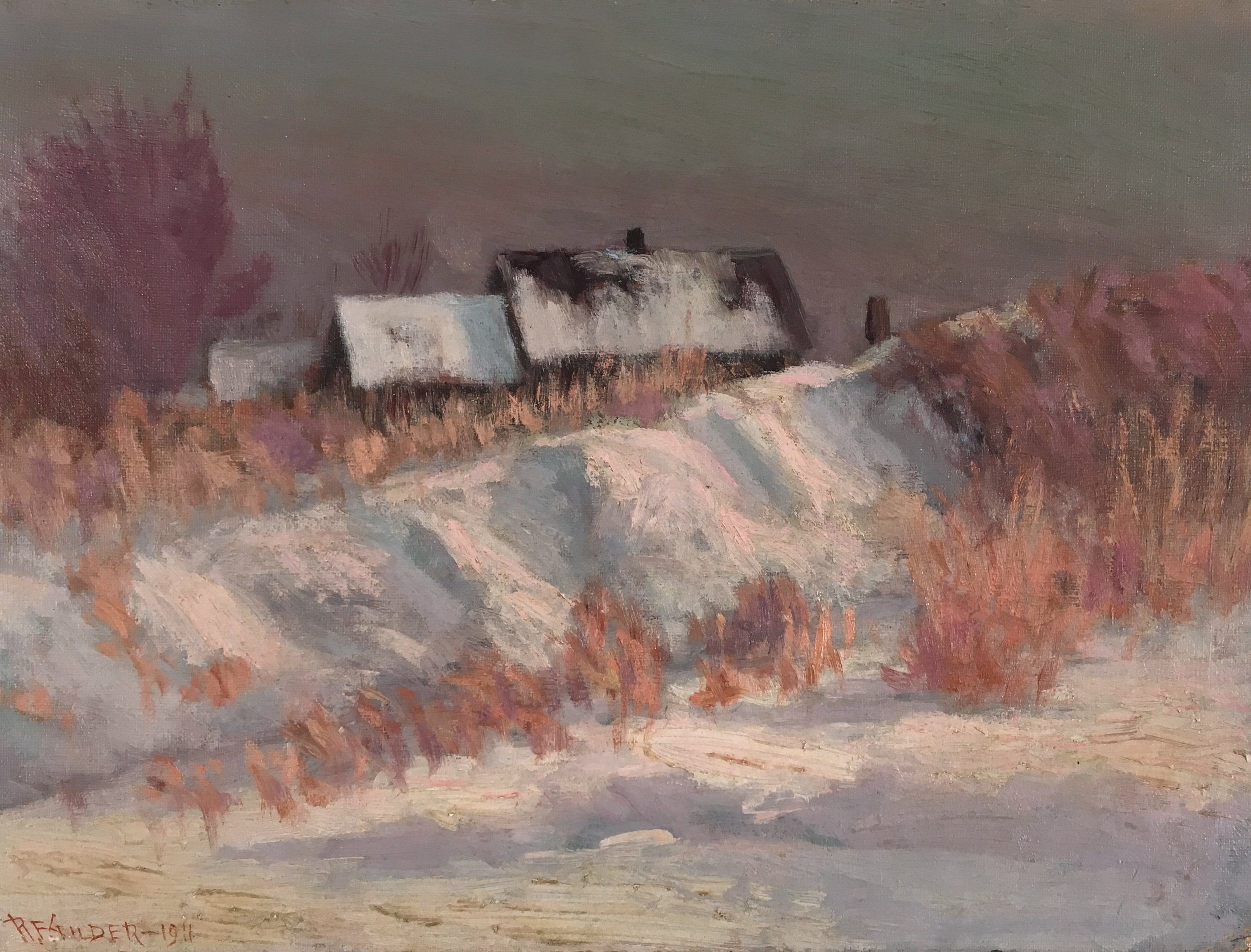Previous Exhibition: Plein Air Artists
August 24 - October 13, 2019
Featuring artwork by three 20th-century Nebraska artists: Eugene Kingman, Augustus Dunbier, and Robert Gilder. Experience their evocative plein air and studio landscapes, showcasing the Midwestern plains, the deserts of the Southwest, and more.
Eugene Kingman (1909-1975)
Eugene Kingman was born in Rhode Island and had a very successful career as both an artist and museum director. Earning degrees in both Geology and Fine Arts at Yale University, he started off his career teaching at the Rhode Island School of Design. Kingman also received several commissions for many murals and illustrations across the United States, including 13 landscapes for a few of the National Parks which were published in National Geographic magazine. In 1939, Kingman became the Director of the Philbrook Art Museum in Tulsa, OK, until 1942 when he joined the army during WWII. After the war, he became the director at the Joslyn Art Museum, holding this position for 22 years. Kingman worked hard to promote and contribute to the arts in Omaha. After his death in 1975, the Joslyn named the “Kingman Gallery” in his honor.
Augustus Dunbier (1888-1977)
Augustus Dunbier was born on January 1, 1888 in Polk County, Nebraska to a German immigrant family. In 1903, he moved to Germany with his family and began studying art at the Royal Art Academy in Dusseldorf. Just before the start of WWI, he moved back to the United States and continued in his artistic studies in Chicago. Dunbier eventually found his way back to Nebraska, settling in Omaha in 1920. At this time he befriended Robert Gilder, and the two spent a lot of time together painting the Nebraska landscape. His artistic career was made up of teaching, traveling, and painting landscapes and portraits. On his travels, he spent time painting with other artists and learning from them, however, he credits Gilder with teaching him the most about painting. He is often considered the first Nebraska artist to earn his living solely as an artist. He died in 1977 at the age of 89.
Robert Gilder (1856-1940)
Born in 1856 in Flushing, Long Island, New York, Robert Gilder came from a prominent Northeastern family. As a child, he learned how to paint and draw, showing a natural talent for it, but ultimately pursued a career in the newspaper business. In 1887, he moved to Omaha for a fresh start in life and began working at the Omaha World Herald for several years, becoming the city editor. He spent much of his free time outdoors, painting and practicing archaeology, both of which he had immense skill for. Gilder made several significant archaeological discoveries which earned him an honorary doctorate degree at the University of Nebraska at Lincoln. He and his friend Augustus Dunbier both spent a lot of time together painting both Nebraskan and Southwestern landscapes. Though Gilder never considered painting to be more than a hobby, he worked tirelessly at it until his death in 1940.

